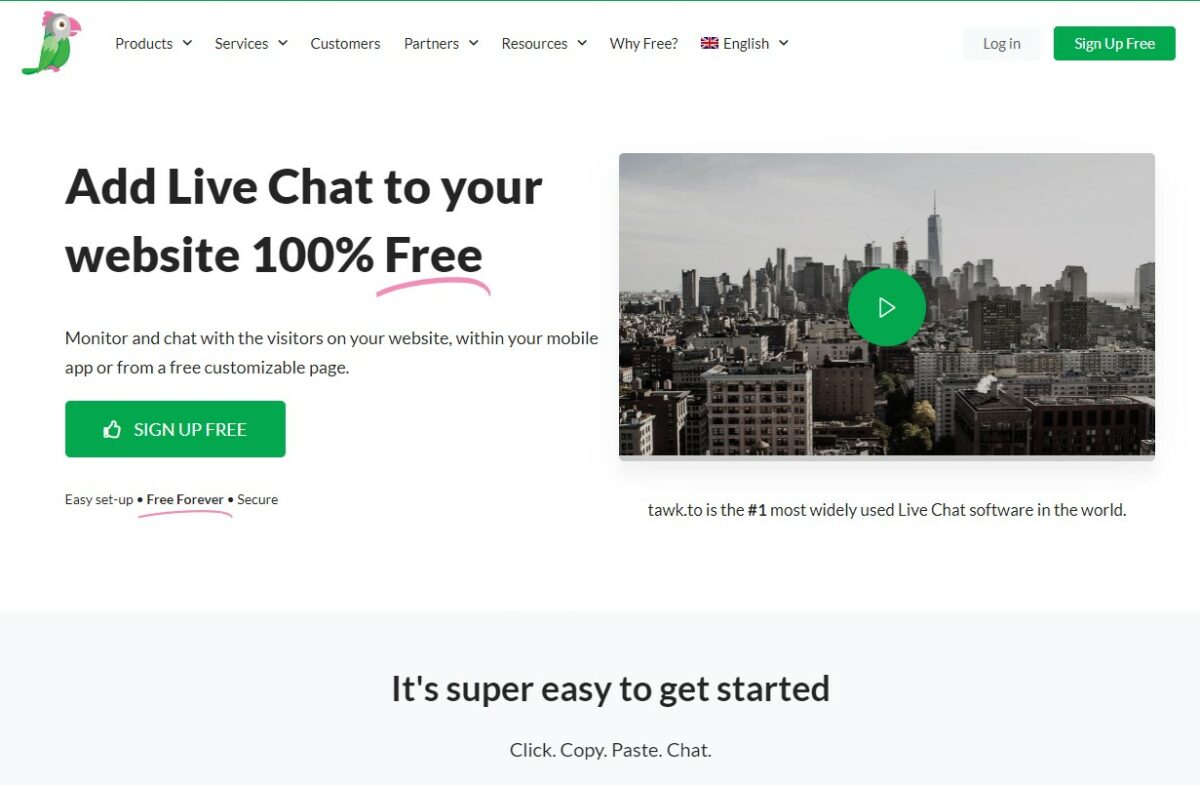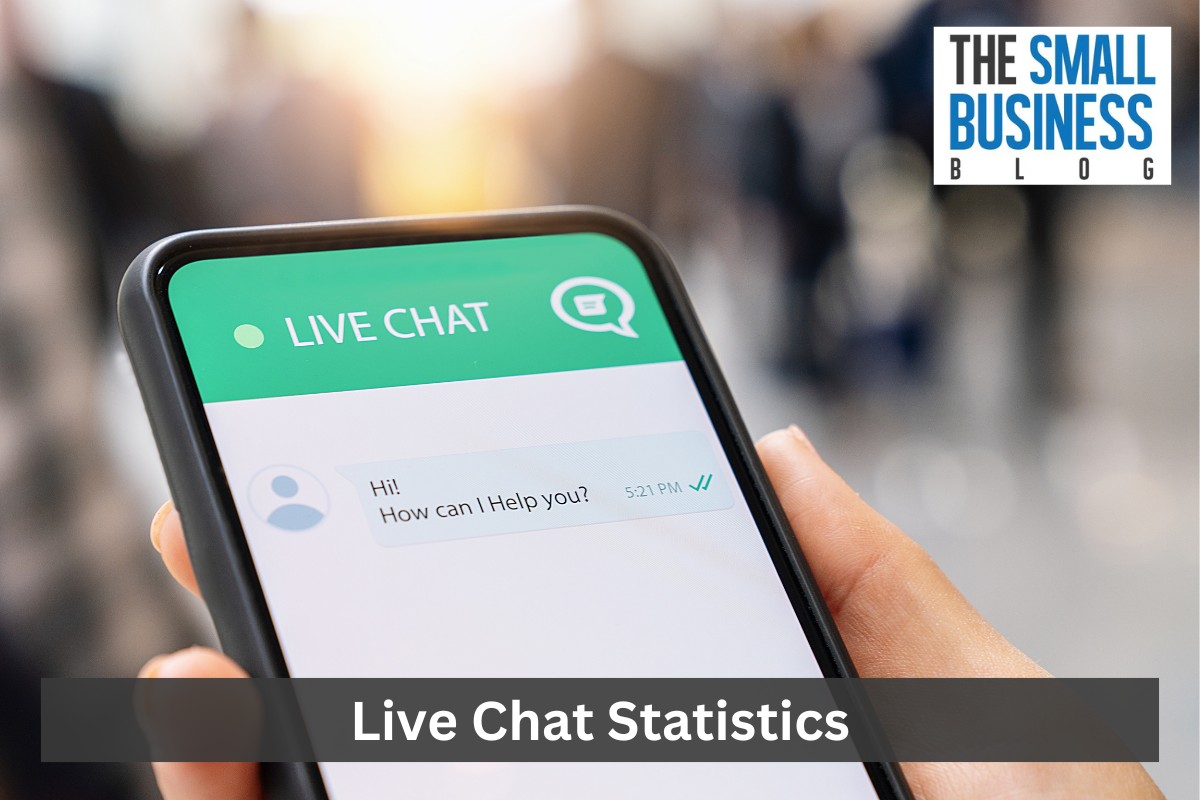The interactions between people and businesses have undergone significant transformation in a world marked by rapid technological advancements and instant connectivity.
Live chat has emerged as a notable breakthrough in this digital landscape.
This real-time communication method enables businesses to engage with customers and provide assistance, answers, and support while fostering meaningful connections.
Do you want to gain comprehensive insights about live chat and its influence on customer experience, overall engagement, satisfaction rate, and sales?
This article delves into these various live chat statistics, including its performance, user growth, conversion rates, and emerging trends.
Post Contents
- 1 Live Chat Statistics
- 1.1 1. Live Chat Presence on a Website Can Increase 12% Conversion Rates
- 1.2 2. Nearly 80% of Businesses with Live Chat Acquired a Positive Result on Revenue, Sales, and Customer Loyalty
- 1.3 3. 82% of Customers Who Had a Live Chat with a Support Agent Are More Likely to Place an Order
- 1.4 4. Over 90% of Customers Feel Satisfied with Phone Support, While 85% Feel Satisfied with Live Chat
- 1.5 5. Tawk.to Have the Highest Share in the Live Chat Software Industry Worldwide in 2022, Accounting for 21%
- 1.6 6. Approximately 85% of Businesses Have Incorporated Live Chat Support into Their Websites or Apps in 2022
- 1.7 7. 41% of Customers Prefer Live Chat as a Customer Support Channel
- 1.8 8. The Majority of Problems and Issues Raised on Live Chat Are Resolved in Less Than a Minute
- 1.9 9. More than 80% of Customers Worldwide were Satisfied with Live Chat Usage in 2022
- 1.10 10. The Real Estate Industry Recorded the Highest Customer Satisfaction Rate with Live Chat Usage in 2019, at 98.56%
- 1.11 11. Almost 40% of Consumers are Most Frustrated By Poor Live Chat User Experience
- 1.12 12. 95% of Individuals Prioritize Top-Notch Support Quality Over Speed
- 1.13 13. More Than Half of Consumers are More Likely to Remain Loyal to Businesses with Live Chat
- 1.14 14. On Average, Customer Support Live Chat Duration is Nearly 12 Minutes
- 1.15 15. Consumer Services Recorded the Longest Live Chat Waiting Time in 2022, with Almost 140 Seconds per Chat
- 1.16 16. Consumers Think that Scripted and Impersonal Live Chat Responses are the Most Frustrating
- 1.17 17. 79% of Individuals Prefer Live Chat Because They Get Answers Immediately
- 1.18 18. Live Chatting with Humans Can Resolve an Issue in 24 Minutes
- 1.19 19. Users Between 18-34 Years Old Use Live Chat “Many Times,” While Users Aged 35-54 Use it “A Few Times”
- 1.20 20. 85% of B2B and 74% of B2C Businesses Use Live Chat for Sales
- 2 Conclusion
Key Statistics
- Around 85% of businesses are eager to incorporate live chat options into their websites in 2022.
- Incorporating live chat into a website can lead to a 12% increase in conversion rates.
- Approximately 79% of businesses observed an increase in revenue, sales, and customer loyalty after integrating a live chat.
- Customers who engage in live chat discussions with a support agent display an 82% higher likelihood of purchasing a product.
- Live chat conversations with human agents can resolve issues within 24 minutes.
- Live chat addresses customers’ queries and resolves concerns in 42 seconds.
- In 2022, customer support live chats lasted roughly 12 minutes or 713 seconds.
- For nearly 30% of consumers, scripted and impersonal responses during live chat interactions can cause them frustration.
Live Chat Statistics

1. Live Chat Presence on a Website Can Increase 12% Conversion Rates
Live chat allows consumers to interact with businesses through text-based messages.
This real-time communication is commonly present on websites, applications, and platforms that provide customer support, answer questions, and address concerns.
According to the latest Live Chat Statistics, incorporating this feature into a website can enhance conversions by 12%.
Visitors who utilize live chat are 2.8 times more inclined to convert than those who do not engage.
Converting website visitors into customers is a crucial objective for thriving e-commerce businesses.
Achieving such results becomes more feasible through the integration of human contact and automation within the chat strategy.
(LTVplus, Gorgias)
2. Nearly 80% of Businesses with Live Chat Acquired a Positive Result on Revenue, Sales, and Customer Loyalty
Many businesses recognize that live chat has more to offer than being a cost-centered support channel.
Instead, it is becoming a powerful instrument for accelerating business expansion.
After deploying live chat, around 79% of businesses noticed an improvement in revenue, sales, and customer loyalty.
By guiding consumers’ purchasing decisions and increasing conversion rates, live chat enhances sales, which results in revenue growth.
Live chat’s personalized engagement encourages customer loyalty that goes beyond simple transactions.
This change in perception emphasizes live chat’s crucial role in modern business strategies, fostering deep customer relationships and ensuring competitiveness.
(Kayako)
3. 82% of Customers Who Had a Live Chat with a Support Agent Are More Likely to Place an Order
Lead generation is an important marketing component and is essential for company success.
Live chat is a significant tool for improving lead generation and maximizing return on investment.
It gathers potential leads and develops them towards conversions by interacting with customers in real time on websites.
This strategy boosts customer trust and captures more leads, which results in higher sales.
A recent report revealed that customers who engage in live chat conversations with a support agent are 82% more likely to purchase a product or service.
This percentage highlighted the influence of real-time engagement on conversion rates and business success.
(REVE Chat)
4. Over 90% of Customers Feel Satisfied with Phone Support, While 85% Feel Satisfied with Live Chat
Customer satisfaction is a top consideration for businesses aiming to provide exceptional support experiences.
Live chat stands out among other support channels, with a customer satisfaction rate of 85%.
It holds the second spot, next to phone support, accounting for a 91% satisfaction rating.
Satisfaction increases when customers engage in real-time interactions and receive answers to their queries or solutions to their issues immediately.
Live chat performs better than other popular support channels, including help center articles, email, Twitter, and Facebook support.
Here are the customer satisfaction ratings per support channel:
- Phone Support – recorded a 91% customer satisfaction rate
- Live Chat – recorded an 85% customer satisfaction rate
- Help Center Articles – recorded an 83% customer satisfaction rate
- Email Support – recorded an 82% customer satisfaction rate
- Twitter Support – recorded an 81% customer satisfaction rate
- Facebook Support – recorded a 74% customer satisfaction rate
(Help Scout)
5. Tawk.to Have the Highest Share in the Live Chat Software Industry Worldwide in 2022, Accounting for 21%

In the live chat software industry, “tawk.to” established dominance in 2022 by capturing a significant market share of 21.41%.
This prominent rise made its position as a leader in the global live chat industry.
Facebook Customer Chat Plugin follows, with over 18% market share.
The market continues to change as more companies realize how important live chat is for promoting customer interaction and support.
Below are the market shares of technologies in the live chat software industry worldwide in 2022:
- tawk.to – had a 21.41% market share in the live chat software industry worldwide
- Facebook Customer Chat Plugin – had an 18.08% market share in the live chat software industry
- Zendesk Chat – had an 8.46% market share in the live chat software industry
- Tidio – had an 8.09% market share in the live chat software industry
- LiveChat – had a 6.03% market share in the live chat software industry
- Other technologies – had a 37.93% market share in the live chat software industry
(Statista)
6. Approximately 85% of Businesses Have Incorporated Live Chat Support into Their Websites or Apps in 2022
Live chat is like a bridge that connects customers and businesses.
Data shows that over 5.3 million websites employ various forms of online chat technology.
The pace of adopting live chat is notably fast, with businesses and companies eagerly embracing it to fulfill customer expectations and achieve an advantageous impact on sales and revenue.
As of 2022, approximately 85% of businesses are keen to integrate live chat options onto their websites.
(Software Advice)
7. 41% of Customers Prefer Live Chat as a Customer Support Channel
Customers highly appreciate personalized interactions with immediate responses.
Whether it’s through phone conversations or live chat support, consumers seek genuine interactions with individuals.
Waiting for delayed responses doesn’t align with their preferences.
Despite the growing popularity of businesses assisting with social media, live chat remains the top-choice support channel for consumers.
Around 41% of customers prefer real-time customer service delivered through live chat over alternative channels like email or phone support.
Let’s find out the percentages of customer service channel preferences:
- 41% of customers prefer live chat support as a customer service channel
- 32% of customers prefer telephone support as a customer service channel
- 23% of customers prefer email support as a customer service channel
- 3% of customers prefer social media support as a customer service channel
(Tidio, Kayako)
8. The Majority of Problems and Issues Raised on Live Chat Are Resolved in Less Than a Minute
Live chat demonstrates its effectiveness by answering the majority of customers’ questions and resolving their concerns within 42 seconds.
However, quick response times alone are insignificant if problems are not solved.
According to a recent industry analysis, most live chat customer issues are resolved in less than a minute with the help of an agent.
This shows that people prefer dependable and prompt assistance, especially for simple concerns, to build confidence in the support system.
(Gorgias)
9. More than 80% of Customers Worldwide were Satisfied with Live Chat Usage in 2022
Customer satisfaction demonstrates how live chat interactions effectively meet customer needs, often attributed to quick response times and personalized assistance.
The real-time aspect of live chat enhances satisfaction compared to traditional methods.
Maintaining this satisfaction involves skilled agents, AI integration, and consistent optimization.
A high live chat satisfaction rate signifies a successful customer-centric support strategy.
Based on the most recent report, the customer satisfaction rates of live chat users worldwide between 2015 to 2022 exceeded 80%, peaking in 2020 at 85.6%.
After two years, 81.1% of customers worldwide were satisfied with live chat usage.
Let’s take a look at the customer satisfaction rates of live chat users worldwide from 2015 to 2022:
- The customer satisfaction rate of live chat users worldwide in 2015 reached 85.4%
- The customer satisfaction rate of live chat users worldwide in 2017 reached 80.6%
- The customer satisfaction rate of live chat users worldwide in 2019 reached 84.3%
- The customer satisfaction rate of live chat users worldwide in 2021 reached 84.0%
- The customer satisfaction rate of live chat users worldwide in 2022 reached 81.1%
(Statista)
10. The Real Estate Industry Recorded the Highest Customer Satisfaction Rate with Live Chat Usage in 2019, at 98.56%
Industries with a higher dependence on personalized customer interactions and real-time assistance often experience higher customer satisfaction rates with live chat.
However, each industry’s specific approach to live chat, the alignment with customer needs, and the expertise of support agents significantly impact the satisfaction rates.
In 2019, the real estate industry held the highest customer satisfaction rate with live chat usage, accounting for 98.56%.
The customer satisfaction rate in the transportation industry comes next, standing at 90.86%.
Here is the list of industries with the highest customer satisfaction rates with live chat usage worldwide in 2019:
- In the real estate industry worldwide, the use of live chat achieved a customer satisfaction rate of 98.56%
- In the transportation industry worldwide, the use of live chat achieved a customer satisfaction rate of 90.86%
- In the technology industry worldwide, the use of live chat achieved a customer satisfaction rate of 90.13%
- In the business service industry worldwide, the use of live chat achieved a customer satisfaction rate of 89.47%
- In the education industry worldwide, the use of live chat achieved a customer satisfaction rate of 88.69%
(Statista)
11. Almost 40% of Consumers are Most Frustrated By Poor Live Chat User Experience
Approximately 38% of customers express their highest level of frustration due to unsatisfactory user experiences encountered during live chat interactions.
These frustrations come from scenarios where support appears unavailable despite the live chat being available, instances of sudden disconnections within ongoing conversations, and answering pre-chat forms before the live chat.
(Kayako)
12. 95% of Individuals Prioritize Top-Notch Support Quality Over Speed
About 95% of consumers highlight their prioritization of high service quality toward personalized live chat support, even if it means a slower pace.
This figure underscores the value of tailored assistance in fostering positive customer experiences and building loyalty.
Businesses acknowledging this preference can establish meaningful connections with consumers, leading to long-term growth and success.
The following points are customers’ live chat experiences:
- 95% of customers prioritize high-quality support over speed
- 52% of customers repurchase from businesses with live chat support
- 29% of customers share their positive live chat experience with others
- 29% of customers agree that long wait times are frustrating
- 20% of customers share their poor live chat experience with others
(FinancesOnline)
13. More Than Half of Consumers are More Likely to Remain Loyal to Businesses with Live Chat
Around 52% of consumers are more likely to exhibit loyalty to businesses and companies offering live chat support.
This percentage highlights the favorable influence of live chat on customer loyalty.
Live chat’s real-time support, convenience, and personalized nature result in a positive experience.
This emphasizes the significance of prioritizing live chat to retain and attract customers through convenient and efficient support.
(Kayako)
14. On Average, Customer Support Live Chat Duration is Nearly 12 Minutes
Customer support live chat duration reflects the length of time spent in live chat interactions.
Short durations may indicate simple issues or efficient problem-solving, while longer durations can signal complex ones.
In 2022, the average duration of customer support live chats was around 713 seconds, equivalent to 11 minutes and 53 seconds.
Below is the average duration of customer support live chat from 2016 to 2022:
- Customer support live chat lasted around 865 seconds in 2016
- Customer support live chat lasted around 557 seconds in 2019
- Customer support live chat lasted around 669 seconds in 2021
- Customer support live chat lasted around 713 seconds in 2022
(Statista)
15. Consumer Services Recorded the Longest Live Chat Waiting Time in 2022, with Almost 140 Seconds per Chat
Live chat waiting time is the time consumers have to wait before they get connected to a live chat agent or representative.
It starts when the customer initiates the chat or enters a queue and ends when the agent becomes available to respond to the inquiry or concern.
A shorter wait time is preferred and reflects a positive customer experience and satisfaction.
Statistics show that the consumer services industry recorded the longest live chat waiting times in 2022, averaging over two minutes per chat session, equivalent to 139.9 seconds.
On the other hand, the media, entertainment, and recreation industry stood out for having the shortest waiting times, with an average of approximately 40.2 seconds.
(Statista)
16. Consumers Think that Scripted and Impersonal Live Chat Responses are the Most Frustrating
Scripted and impersonal responses during live chat interactions are a significant source of frustration for 29% of consumers.
This finding highlights the importance of genuine and personalized interactions in customer support. Customers value authentic and tailored assistance.
Scripted responses can leave them feeling unheard.
This percentage underscores the significance of humanizing customer interactions to enhance satisfaction and build meaningful connections.
Businesses that prioritize addressing this concern deliver more satisfactory customer experiences.
(Kayako)
17. 79% of Individuals Prefer Live Chat Because They Get Answers Immediately
Live chat became a popular channel enhancing business-customer communication because of real-time engagement, personalized assistance, and convenience.
According to a survey, 79% of people prefer live chat because they get immediate answers.
Here are some of the reasons why people prefer live chat:
- 79% prefer live chat because of immediate answers
- 51% prefer live chat because they can multitask
- 46% prefer live chat because it is the most efficient communication method
- 38% prefer live chat because it works well
- 29% prefer live chat because they get better information than on email
(REVE Chat)
18. Live Chatting with Humans Can Resolve an Issue in 24 Minutes

Customers highlight the duration of interactions with customer service agents as the main reason for choosing live chat over other communication methods.
A study revealed that engaging in real-time conversations with a human agent ranked at the top for the shortest chat duration, resolving issues in 24 minutes.
In comparison, email took 157 minutes to resolve an issue, while social media messaging required 58 minutes, and online chat with a bot required 27 minutes.
(Gorgias)
19. Users Between 18-34 Years Old Use Live Chat “Many Times,” While Users Aged 35-54 Use it “A Few Times”
A common misconception about live chat is that it exclusively appeals to younger generations.
However, a survey revealed that live chat usage extends across all age groups.
Although individuals aged 18 to 34 are more inclined to use live chat “many times,” many individuals aged 35 to 54 also indicated engaging with live chat “a few times.”
(Help Scout)
20. 85% of B2B and 74% of B2C Businesses Use Live Chat for Sales
In business operations, live chat underscores its primary role as a customer support medium for B2C enterprises.
A significant 67% of B2C businesses rely solely on live chat for customer support.
However, live chat extends beyond this function.
Around 85% of B2B and 74% of B2C businesses use live chat to drive sales.
Furthermore, it serves as a versatile tool, with 54% of B2B and 31% of B2C firms employing live chat for marketing initiatives.
(Techjury)
Conclusion
Live chat has emerged as a dynamic communication tool, transforming how businesses interact with customers.
As a real-time communication method, live chat bridges the gap between brands and their consumers, providing immediate assistance and personalized interactions.
This mode of communication has witnessed widespread adoption due to its ability to enhance customer experiences and improve business-customer interactions.
Live chat statistics play a crucial role in helping businesses understand the significance of this communication channel.
They show its effectiveness, customer preferences, and impact on loyalty and sales.
These statistics can make informed decisions to optimize live chat strategies and enhance customer engagement.






























